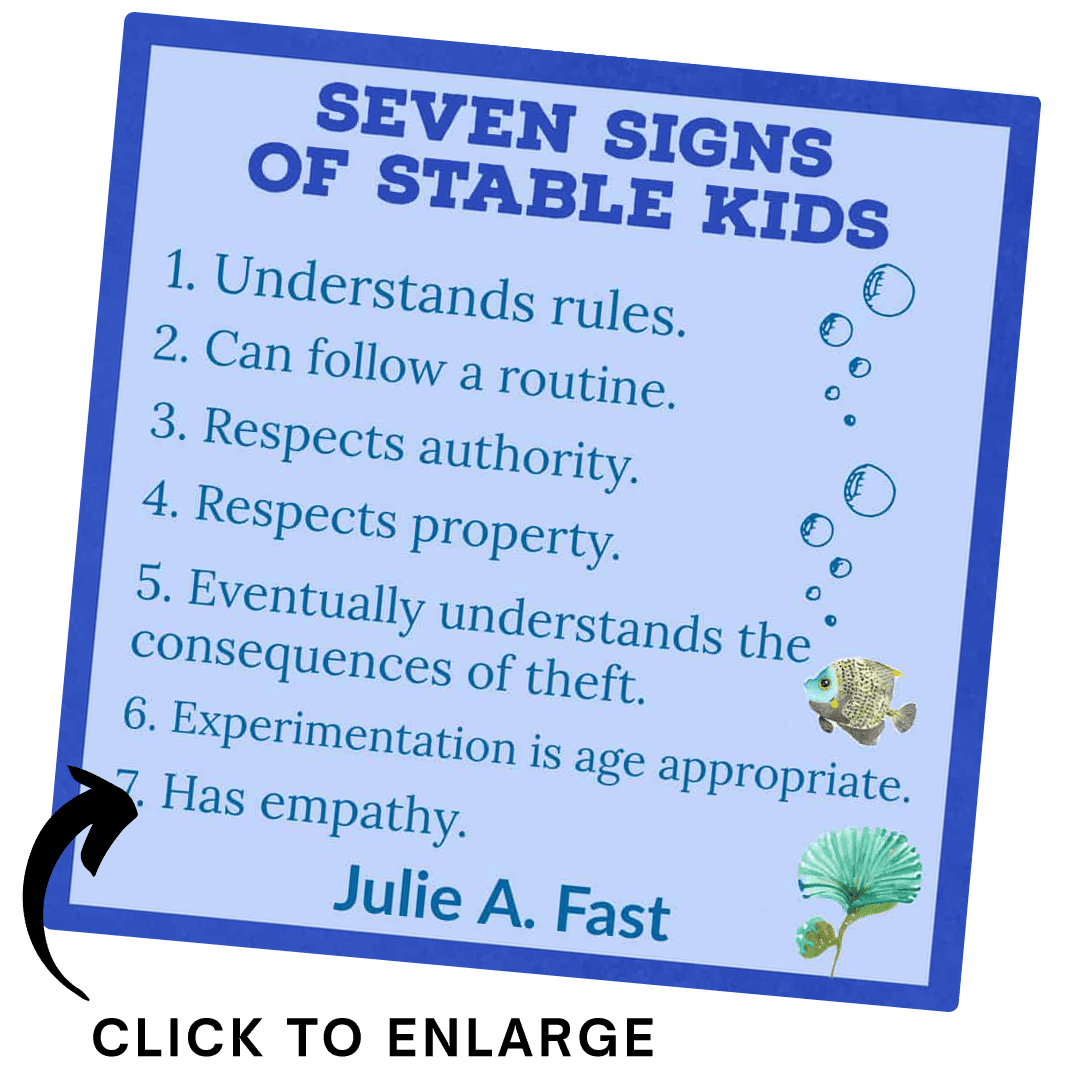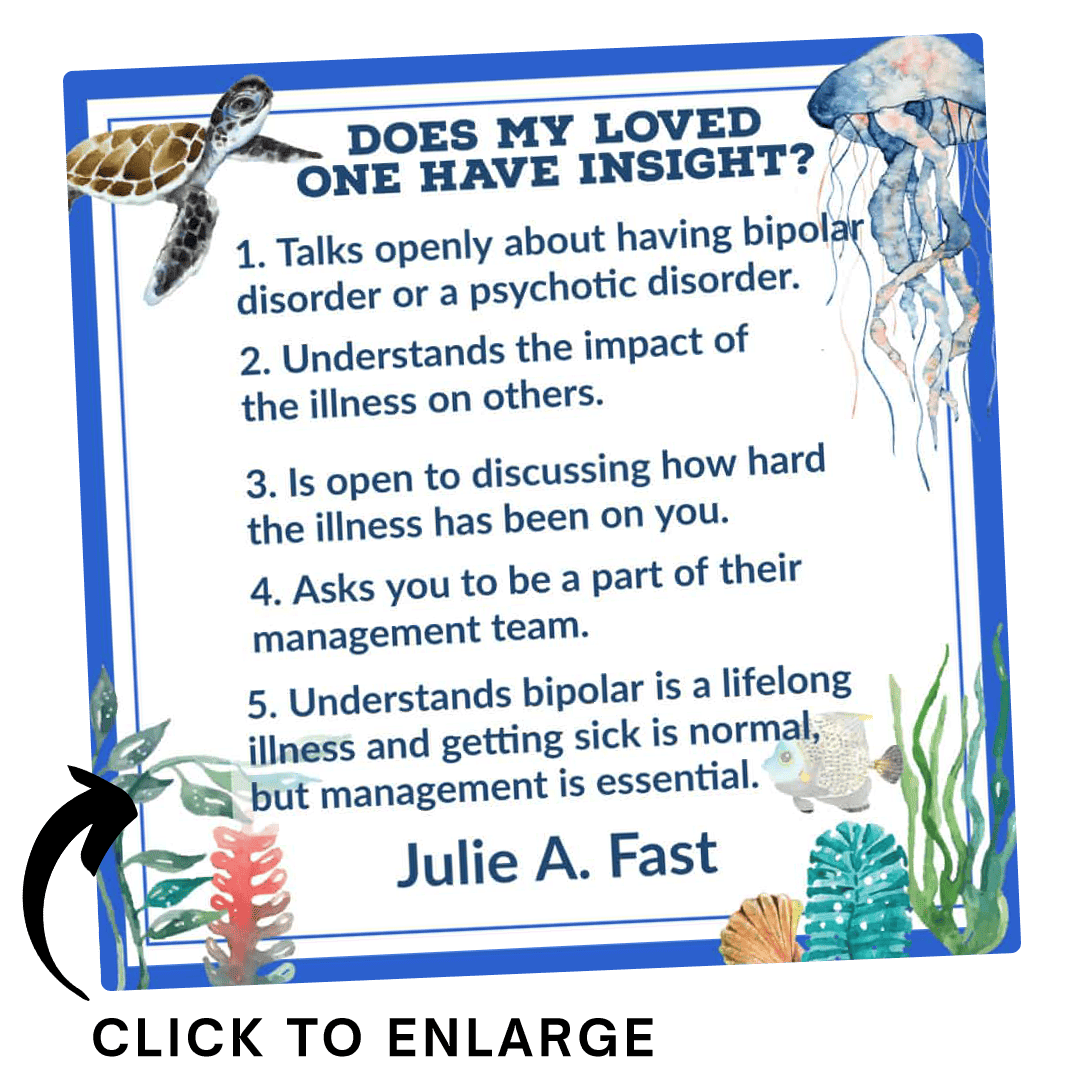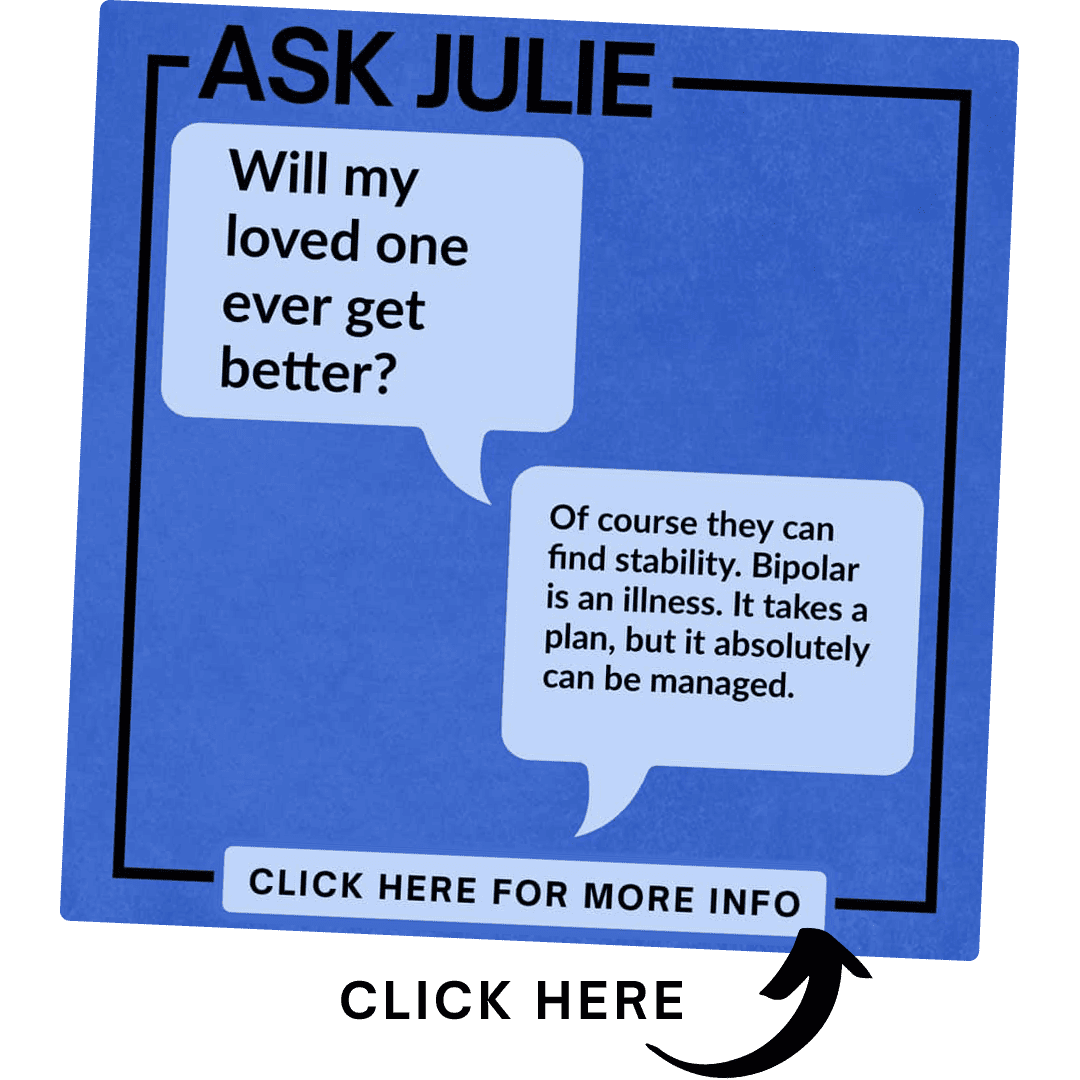
Julie's Newsletter
Strategies and skills for family, caregivers, partners and coparents.

Welcome to the Family and Caregiver page
This page includes information for parents, siblings, children and family members of a person with bipolar or schizoaffective disorder. The information here can help you find information that leads to peace in your current situation. Your needs are different than the needs of people with bipolar. It’s important to learn about the treatment and management of bipolar disorder symptoms, but it’s also essential to utilize information that speaks directly to your experiences. Julie’s work has always focused on the needs of those who care about someone with bipolar disorder. Your needs are important.

Welcome to the Family and Caregiver page
This page includes information for parents, siblings, children and family members of a person with bipolar or schizoaffective disorder. The information here can help you find information that leads to peace in your current situation. Your needs are different than the needs of people with bipolar. It’s important to learn about the treatment and management of bipolar disorder symptoms, but it’s also essential to utilize information that speaks directly to your experiences. Julie’s work has always focused on the needs of those who care about someone with bipolar disorder. Your needs are important.
Julie's Newsletter
Strategies and skills for family, caregivers, partners and coparents.



Julie's
Family and Caregiver Protocol
The following protocol list encompasses what I teach in my books, coaching and workshops. It’s based on 25 years of interacting directly with family members and caregivers. I will add more to the protocol section as I add information to this website. New info will be announced in the family newsletter. I also talk about all of these topics on The Stable Table.

Be clear on your needs. Yes, I am putting you first. It’s the only thing that works. This of course takes time, but it’s essential if you want to help a loved one. What do you need in order to have a relationship with the person who has bipolar disorder?

Get a robust diagnosis for a loved one. Is it bipolar? Is there a separate anxiety or psychotic disorder? Etc.

Read Take Charge of Bipolar Disorder and start using the Bipolar Conversation and Bipolar Significant Seven strategies. These are immediate and life changing.

Get help for your own anxiety and experiences that arise from caring about someone who has bipolar disorder and psychosis. You are separate from the person with the illness. Your health and especially your sleep matter too.

Learn Julie’s communication system so that you can talk to a loved one in an episode without creating defensiveness or fear in yourself. Visit the Stable Table for daily information on this topic.

Create a relationship with your loved one’s health care team. Yes, this can be difficult, but it’s essential if you want to help a loved one. This is a process you can learn.

Bipolar is a sleep disorder. Work with a loved one to create a sleep plan that everyone can understand and use.

Once you have a better understanding of symptoms, focus on a plan that you want to follow to help a loved one. Do not expect a loved one to do this for you. This is about you.

Keep up on the latest research through Julie’s research page.

Prevention is everything. You can learn about prevention and pass on the information to a loved one.
How to
use Julie’s Books in Your Relationship
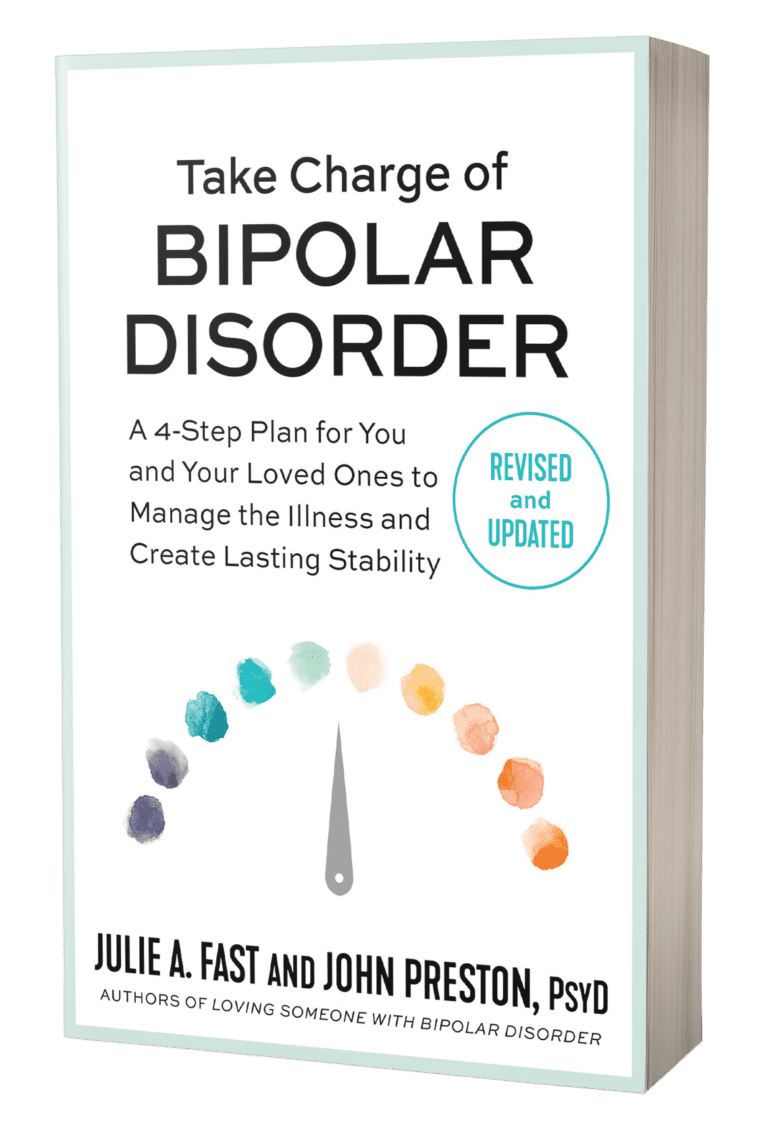
Take Charge of Bipolar Disorder
Julie suggests reading Take Charge of Bipolar Disorder for yourself at first. The book teaches the management plan Julie created in the 1990s that is now used by millions of people around the world, but this doesn’t mean you should just hand the book to a loved one and say, “Use this! It will help!” Instead, the system works much better if you incorporate the strategies into your life and then share them with a loved one at an appropriate time. If a person with bipolar disorder is ready for this book, they will get the book on their own. People with bipolar are are often ill while you search on ways to help them. This means they may not be ready for the plan in Take Charge, but you are ready. If you’re new to Julie’s work, start with the Bipolar Conversation chapter and focus on how you can take care of yourself while helping someone with bipolar disorder or schizoaffective disorder. Bipolar management takes time. It’s ok to start slowly and learn what you need before sharing this with a loved one. When the time is right, reading the book together is a great way to incorporate the management strategies into both of your lives. Your loved one can learn to manage bipolar disorder. The plan in Take Charge of Bipolar Disorder shows you how to help.
Getting It Done When You’re Depressed
It’s heartbreaking to see someone struggle with depression. It can also be frustrating if the depression leads to irritation and helplessness. Getting it Done When You’re Depressed was the first book to offer strategies that help a person get on with life while the depression is still around. So many books talk about ending depression, and this is great, but it’s not always reality. Sometimes a person has to learn to live with the depression while they are getting treatment for the symptoms. There are 50 strategies in this book that you can learn and then use with a loved one. There is a section in each strategy for those who want to help and Julie clearly shares how uses these strategies to work and get on with life despite her chronic depression, anxiety and focus concerns. The book is also an excellent resource for anxiety and ADD symptom management. One way to use the book is to choose a strategy you feel would help a loved one and then read the strategy out loud. If a loved one is functional enough to focus on self care, you can hand them the book and say, “Does this women know what she’s talking about!?”
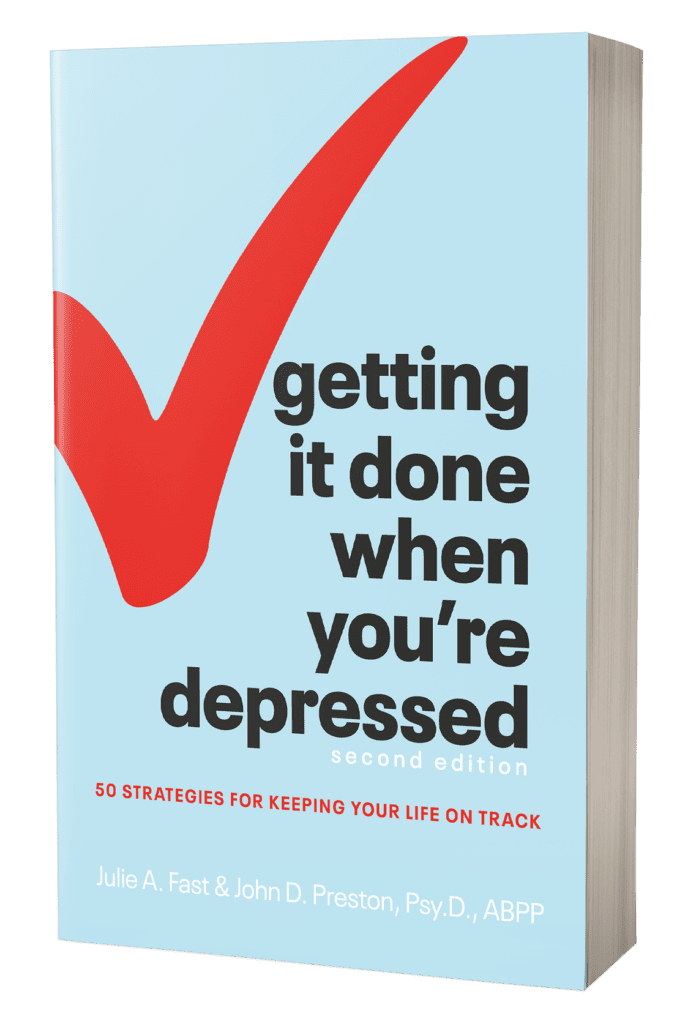
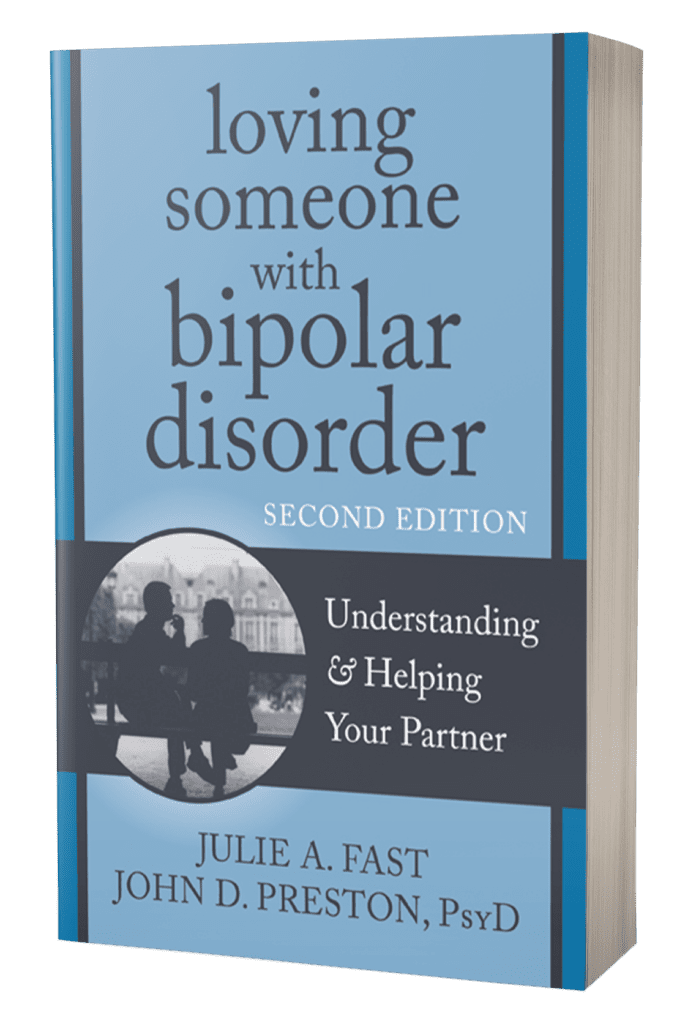
Loving Someone with Bipolar Disorder
Although this book was written for partners, the system works exceptionally well for anyone who wants to better communicate with someone who has bipolar disorder or schizoaffective disorder. Loving teaches you how to create symptom lists that can be used to recognize mood swings from the beginning in order to prevent big episodes. You can also learn the challenges your loved one may face in a romantic relationship. Loving is a positive book that is used around the world to help couples find stability when a partner has bipolar disorder.

The Stable Table
The Stable Table on Facebook is a private group for family members, caregivers and health care professionals. It has many posts on bipolar and psychosis treatment and management, medications, substances that affect the bipolar brain such as cannabis, working with health care professionals, communication during a mood swing and more. The group helps people use Take Charge of Bipolar Disorder, Loving Someone with Bipolar Disorder and Getting it Done When You’re Depressed with loved ones.

Article and Video
Resources
The following resources for family, caregivers, friends and health care professionals will help you figure out what you need in a relationship with someone who has bipolar disorder and/or a psychotic disorder. Julie’s system works for people of all ages and is based on the idea that getting your needs met while helping someone who experiences mood swings and psychosis is essential and possible.



You experience bipolar disorder as the observer. You’re often on the receiving end of symptoms and in many cases, you are the first to observe a mood swing as soon as it begins. For this reason, it helps to be very clear with yourself on how bipolar disorder symptoms impact you and the relationship. The more you know about the symptoms and how to recognize them as early as possible so that you can avoid the communication and relationship struggles that come with unmanaged bipolar. The following articles offer a wide array of symptoms you may see when a person is in an episode.
A Letter from a Depressed Person
A Letter from a Dysphoric Manic Person
A Letter from a Euphoric Manic Person
The End of Bipolar Depression Isolation
Three Physical Signs of a Serious Bipolar Depression Downswing

Schizoaffective disorder, bipolar type, is the combination of bipolar disorder and a separate psychotic disorder. This is Julie’s official diagnosis.
Bipolar Disorder vs Schizo-Affective Disorder: What’s the Difference?

Julie, how do I get my loved one into treatment? This is the most common question I receive in my work. There isn’t one answer, but there is a process I use that works. The articles below share my system. I teach this process on The Stable Table on Facebook and through my coaching and workshops. You can sign up for the Family newsletter to receive info on my upcoming events.
Reciprocal Relationships: Parenting Your Adult Child While Meeting Your Needs
How Can I Get My Partner to Accept Their Diagnosis?
How to Talk to a Loved One about Getting Treatment For Bipolar

It’s hard to figure out what to do when a loved one is ill. For this reason, you can learn to recognize symptoms early and then have a plan in place that works to bypass the stress of the situation. You can avoid The Bipolar Conversation (a chapter in Take Charge of Bipolar Disorder explains this process) and teach yourself to recognize the very beginning of a mood swing.
The Bipolar Conversation: A Communication Tip to Change Your Life
7 Signs a Loved One with Bipolar Disorder Needs Help
What Does Bipolar Mania Sound Like?
Does My Teenager Have Bipolar Disorder?

Parent of an adult child with bipolar? I teach that all parents need to be involved in a child’s health care. Often the child doesn’t want this and that is ok. This is about you and your observations. This article shows how you can share what you experience with a healthcare professional while respecting the needs of the person with the illness. Please note that the article talks about children and therapists, but the system is the same for all health care professionals.
When Your Child Needs A Therapist: How To Effectively Report Symptoms

My main work with clients is helping parents of an adult child with bipolar disorder find stability. This is a many layered process that starts with a change in yourself regarding what you are willing to accept in your relationship with the person who has bipolar disorder. I teach this process in my workshops and will announce my schedule through the newsletter. For now, look over these resources and start to plan for what YOU need if an adult child is living at home. This isn’t about kicking someone out and I know the fear that a child will be homeless, but focusing on your needs around their behavior is the only thing that works.
The “Hijacked House”: Tips for Parents of Adult Children with Bipolar Disorder Living at Home (Article)
What Does It Mean to Have a “Hijacked House” with Bipolar? (Video)
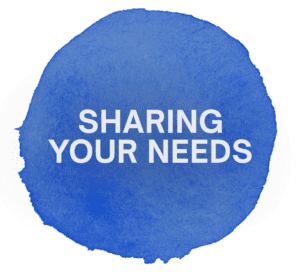
You have a different experience of bipolar than the person with bipolar. Your needs around this illness are important. When you learn to focus on what you need from the person with bipolar instead of telling the person with what they should or need to do, the dynamics change and you can be heard.
Reciprocal Relationships: Parenting Your Adult Child While Meeting Your Needs
Loving Someone and with Bipolar

Start with the Bipolar Significant Seven (BPS7) chapter in Take Charge of Bipolar Disorder and figure out your opinion and stance on the substances that affect the bipolar brain. There is an excerpt from the chapter at the bottom of this page.
Why are People with Bipolar Drawn to Drinking & Substance Abuse?
Why Can’t I Take Antidepressants or ADHD Meds If I Have Bipolar Disorder?
Can Energy Drinks Cause Bipolar Disorder Mania?
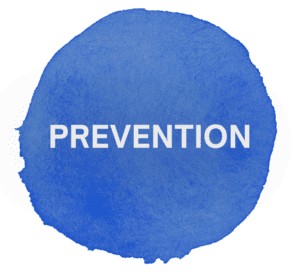
People who care about a person with bipolar are often much better at recognizing triggers of the illness than the person who is ill.
Why You Need to Help Your Loved One Prepare for Bipolar’s Big Triggers in Advance
Find The Work That Works For You & Your Bipolar Disorder
Recognizing Signs of Bipolar Stability
The Best Question to Assess Bipolar Mood Stability—How Is Your Sleep?

Bipolar disorder can create very difficult and unpleasant symptoms. You can recognize these symptoms and learn to prevent them in your relationship. This is about you and you are willing to accept in a relationship. People with bipolar disorder can learn to treat you with respect.
Why Is My Loved One with Bipolar Suddenly Being Difficult and Unkind?
How to Explain Everyone DOES NOT Have a Form of Bipolar Disorder
Bipolar and in Jail? How to Move Your Court Case to Mental Health Court
Three Bipolar Disorder Symptoms No One Wants to Talk About (Article):
Three Bipolar Disorder Symptoms No One Wants to Talk About (Video)

Bipolar disorder can be managed. It takes teamwork and a plan, but a stable relationship is possible. People with bipolar disorder can be loving and stable family members.
Recognizing Signs of Bipolar Stability
Do People with Bipolar Disorder “Recover”?

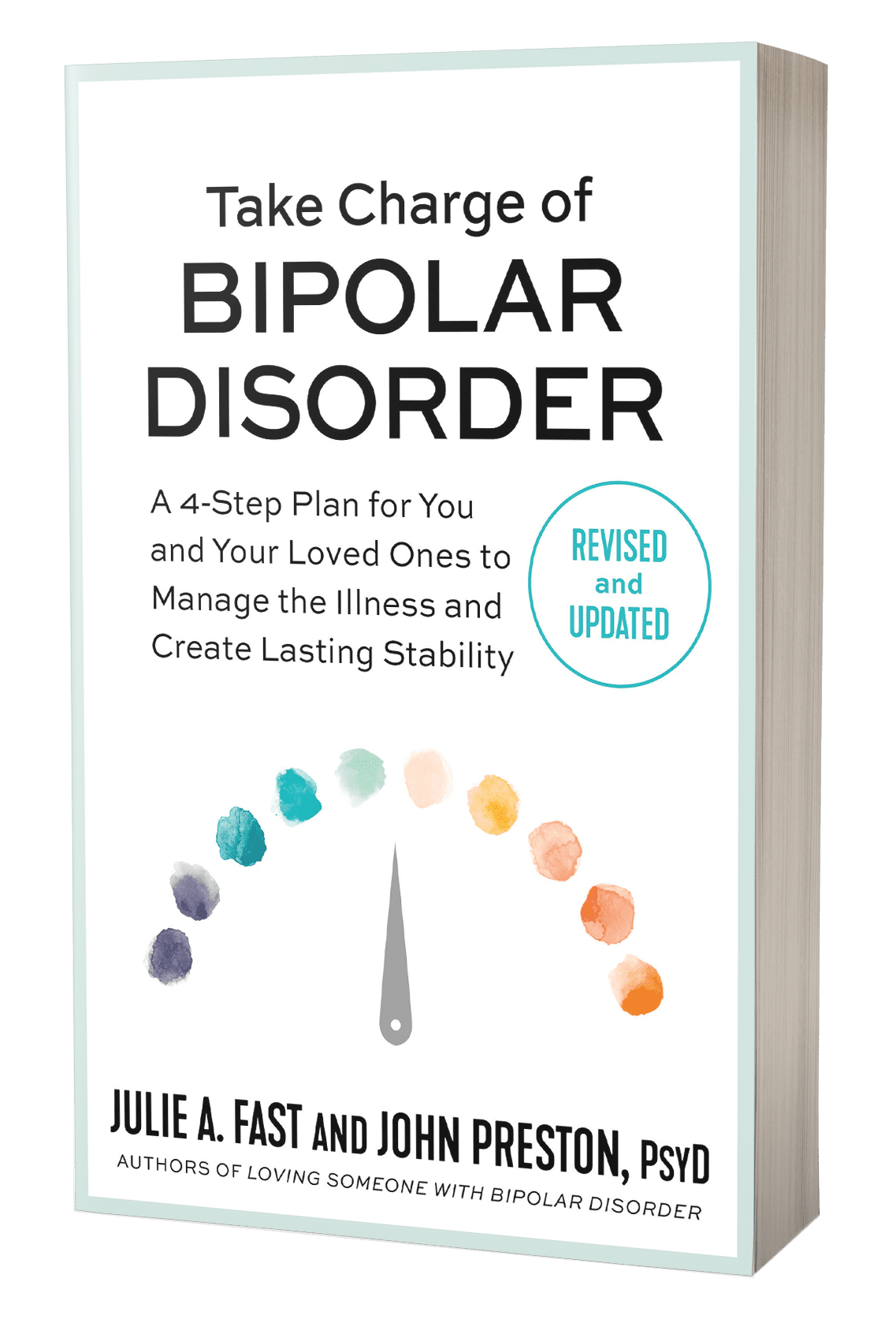
How to Use the Information in Take Charge of Bipolar Disorder with your loved one.
Take Charge of Bipolar Disorder works to help you figure out how to recognize and manage the symptoms of bipolar disorder or schizoaffective disorder. The following is an excerpt from the Bipolar Significant Seven chapter where I share my list of the seven substances that can negatively affect the bipolar brain. This includes the reason cannabis marijuana is such a difficult substance for those with bipolar to manage.
Here are the substances you will learn about in the book. It’s life changing information and is based off of my work with many tens of thousands of people around the world who have shared their stories while we work together as well as my own experience as a person with bipolar disorder and a psychotic disorder. You can also use this list to help a loved one prevent mood swings and ultimately teach it to any family member who is genetically predisposed to developing bipolar disorder.

Stimulants

Sex and reproductive hormones

Steroids

Prescription medications

Hallucinogens

Supplements

Social drugs
Take Charge of Bipolar Disorder also includes a window into what it’s like to live with the illness. It shares the management and communication system I created over 25 years ago that is now used by millions of people around the world. Yes, you can use the strategies in the book even if your loved one is not open to treatment at this time.
EXCERPT FROM TAKE CHARGE OF BIPOLAR DISORDER
The person with bipolar disorder might be in a mood swing or unable to make bipolar, safe decisions. When you understand the Bipolar Significant Seven list, you can educate the whole family as well as your loved one’s healthcare professionals about potential mood swings you believe may be a result of a substance on the list. You can also use this list forensically to figure out current and past mood swings and share this information with your loved one’s healthcare professionals if appropriate.
Once your loved one is ready for management, this list can be discussed in detail. Please note that this is meant to be an exploration, not just a do and don’t list. People with bipolar disorder have human needs separate from managing bipolar disorder and they will naturally seek help from a substance for these needs. It helps to first understand the need and then discuss the use of the items on the list. This is especially true if a substance is being used to feel better during a mood swing. The items listed for each category include substances known to affect the bipolar brain, but please note these are not definitive lists and your loved one may not react to every item listed. The goal is increased awareness around their ability to make bipolar safe decisions in every area of life.

What's next?

Read Take Charge of Bipolar Disorder and determine what strategies you will use with talking with a loved one about bipolar disorder. We don’t just hand the person the book and say- read this! It will help! This doesn’t work and it isn’t the family system I teach. Instead, I suggest using the system for yourself first and then sharing what you need in the relationship around bipolar management.

Join The Stable Table and Julie’s Family and Caregiver Newsletter.

Get clear on what YOU need, not what the person with bipolar needs to do. Work towards a reciprocal relationship where you participate in a loved one’s treatment if that is what you need. This is possible even if the person doesn’t allow you to take part in their treatment. This is about your education and your needs.

Give yourself time to learn about the illnesses and come up with a plan for yourself. Base your feelings off of what you can’t do, not what the person with the illness isn’t doing. This creates peace.

Read more about the ketogenic metabolic therapy diet for bipolar disorder here.

Julie has two Instagram resources. Click here for her personal Instagram. Click here for her Keto Bipolar page.

Explore the Treatment Advocacy Center page for information on long term assisted outpatient treatment (AOT and ACT) for those in the United States.







